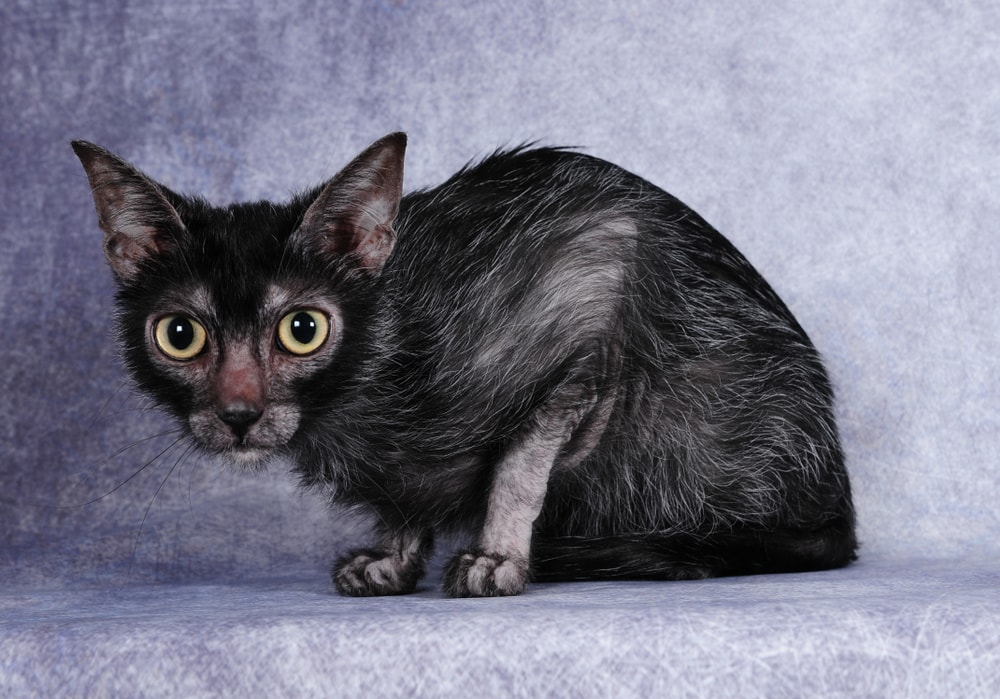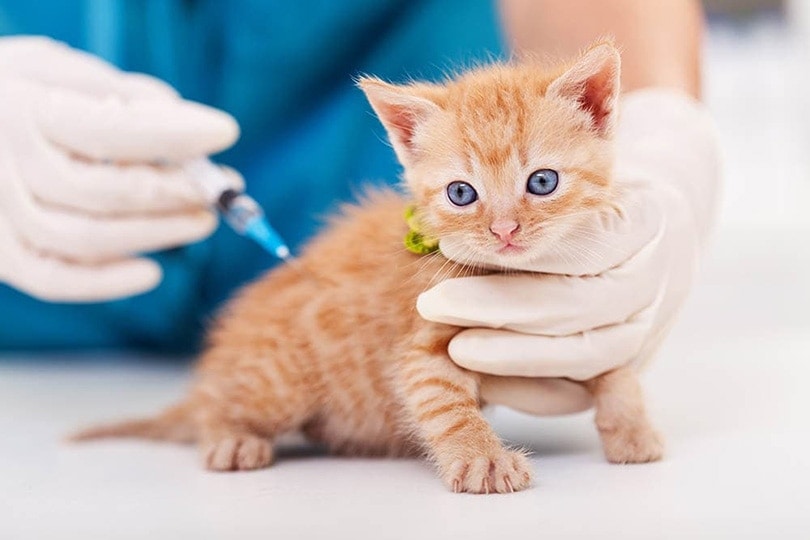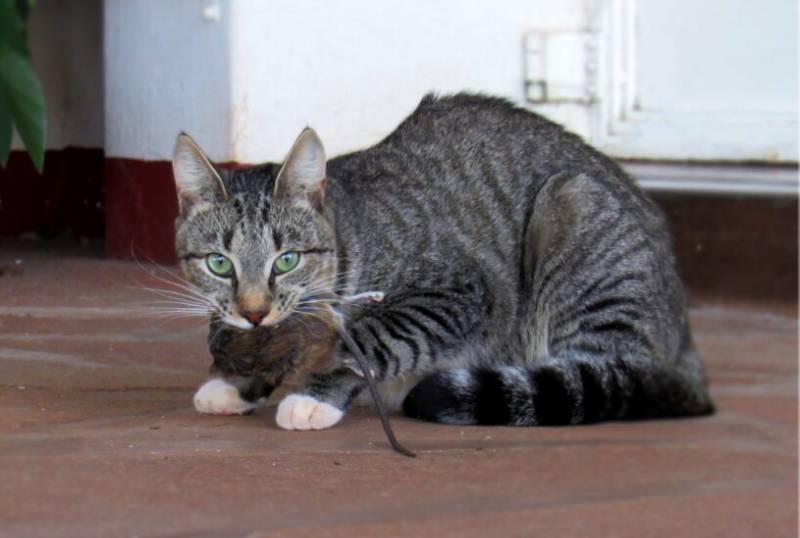11 Ways to Tell if a Dog is Aggressive Toward Cats
Updated on
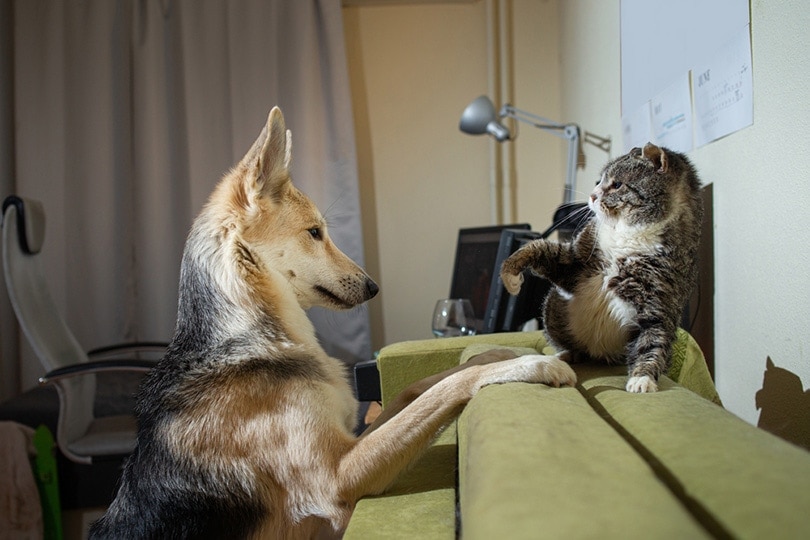
It is the dream of every pet owner that all the animals in the house will get along great. Unfortunately, that is not always the case. It is very important for cat owners that are considering a dog, or vice versa, to know how to tell if a dog is cat aggressive.
Below we will not only go over the different ways to tell whether a dog is cat aggressive, but we will explore further into this issue so that you are well informed on how to handle this kind of situation and if there are any potential solutions.
The 11 Ways to Identify Dog Aggression Toward Cats
There are many reasons why your dog could become aggressive towards cats, sometimes seemingly without any warning. The truth is, dogs do give warning signs, even if they are subtle.
These subtle cues are observed in the dog’s body language and can easily be missed if you do not know what you are looking for. Below is the list of 12 ways a dog will let you know if they are about to show aggression toward a cat.
1. Rigid Stillness
A telltale sign of impending aggression towards a cat is if the dog were to freeze in place and become rigidly still. This signal is very easy to miss but it speaks volumes, as it is an aggressive posture.
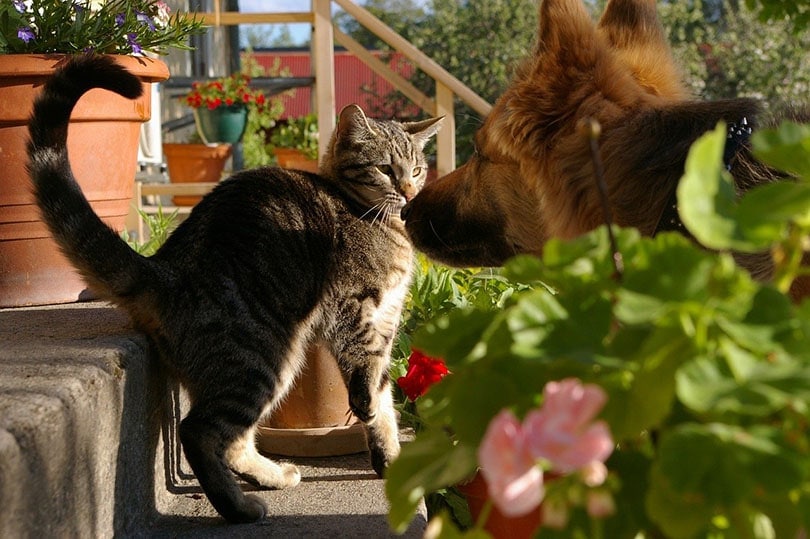
2. Staring
In addition to the aggressive posture of freezing in place, the dog will lock in a very tense stare that radiates sinister energy. This stare is also an indicator of an impending attack.
3. Visual Tracking
While a dog has locked in that tense, aggressive stare, it will also visually track every movement the cat makes. The cat could be clueless as to what is going on and could simply be going about his or her business and moving around as if nothing is wrong. If you notice a dog become still, lock in the stare, and start visually tracking the cat, an aggressive outcome is very likely.
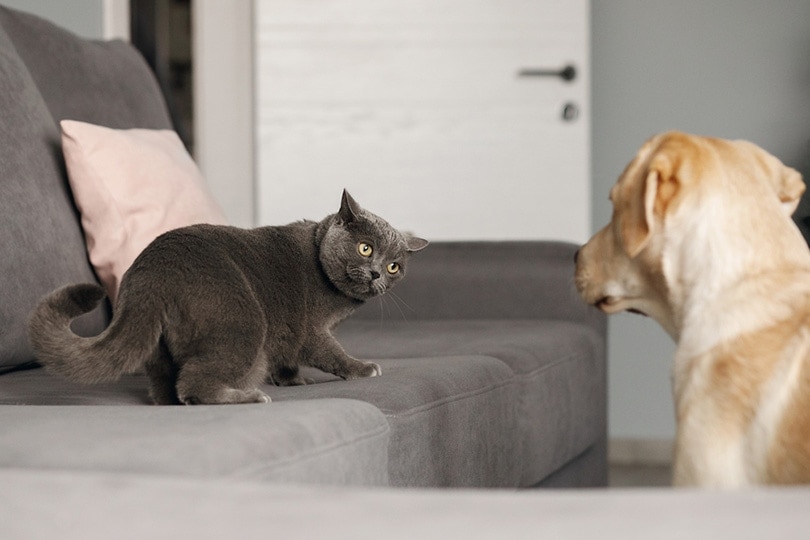
4. Tail up
When your dog’s tail goes up, this is an indicator of aggression. This can signify that they’re about to react to whatever it is they’re unhappy with or have their sights set on.
5. Hackles raised
Raised hackles on a dog mean they are on high alert. This response could be brought on by fear, dominance, or uneasiness and can be indicative of an aggressive response. Keep in mind that not all dogs will show this display, especially when the aggression is a result of prey drive. It also may not be as noticeable on short-haired dogs, while on other breeds like German Shepherds, hackles are very noticeable when raised.
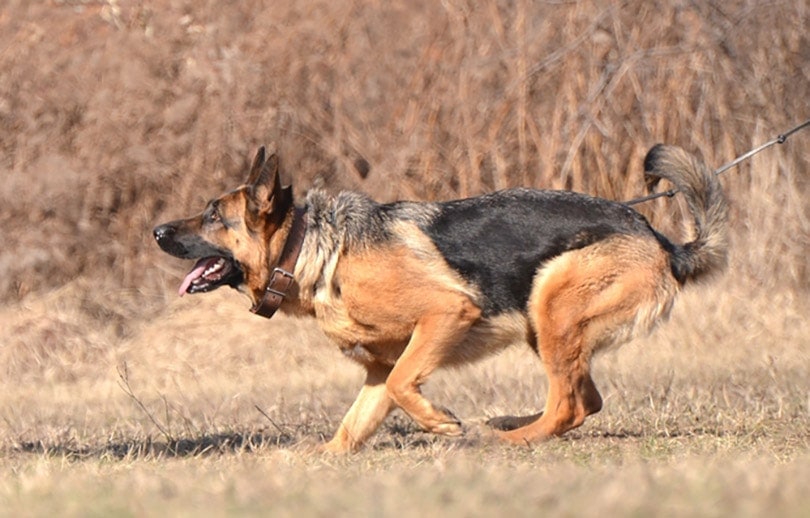
6. Barking/Whining
Some dogs will bark and whine excessively when they are in the presence of a cat, or they know one is nearby. Barking and whining are a sign of excitement that is usually a result of a predatory response to prey.
7. Low Growling
The most common reasons a dog will sound a low growl are fear, possession aggression, territoriality, and even pain. If a dog is low growling at a cat, they are likely causing the dog to feel one of the above. For example, a dog may release a low growl when a cat comes near their food as a warning for them to get away. Low growling may be absent in instances of high prey drive but is common in other situations.
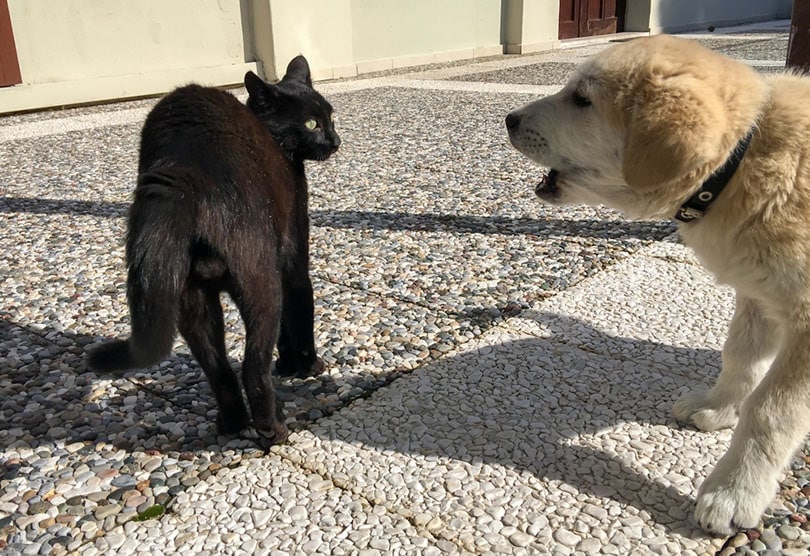
8. Baring Teeth/Snarling
One of the most obvious signs a dog is displaying aggression is when they bare their teeth. This can be uneasy to see but teeth-baring is a warning that is usually prompted when a dog is either fearful or feels threatened. It is also common for dogs to do this when they are asserting dominance. Cats simply are not built to challenge a dog’s dominance, though some may think they are. Teeth baring can be accompanied by snarling.
9. Lunging
Lunging is one of the final warning signs a dog will give that can quickly lead to an attack. Dogs will lunge in aggression that is triggered by fear, a display of dominance, possession aggression, or territoriality.
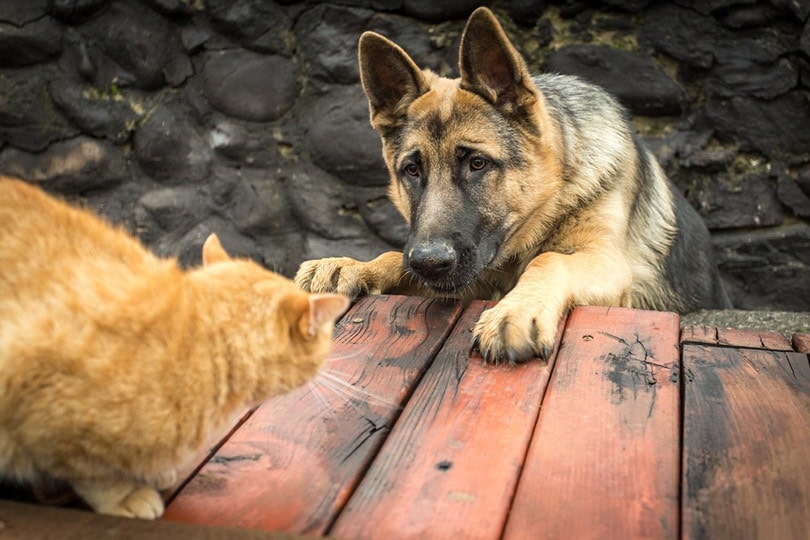
10. Biting
While biting is undoubtedly one of the most obvious signs of aggression a dog will show toward a cat, not all bites are the same. Some bites may be warning nips or snapping while others could be with full intent to cause harm. In an ideal circumstance, it will not get this far. Depending on the size of the dogs and the intent behind the bite, this is very dangerous to your cat.
11. Chasing
If you notice a dog has a high drive to chase cats and other small animals, there is a good chance of aggression if they were to catch what they are chasing. Many dogs will playfully chase cases with no intent to harm.
Others have such strong prey drives that they cannot resist the temptation of pursuing prey. It can be catastrophic if the cat or other small animal were to be caught.
When a dog is displaying a highly aggressive prey drive, it will typically stiffen up, lock in the tense stare, and may even visually track the attack before the attack. When it is prey-driven, be wary, as it can happen very quickly.
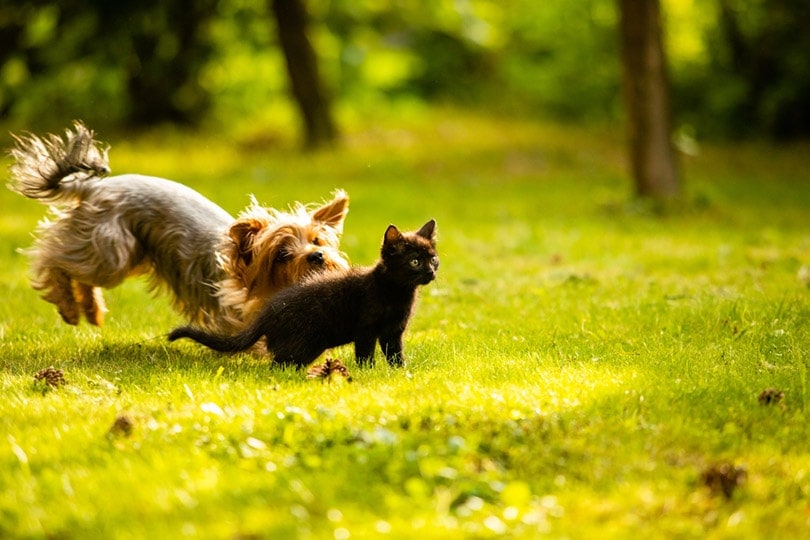
Why Is My Dog Aggressive Toward Cats?
It can be terrifying to witness your dog acting aggressively toward your cat, for no apparent reason, especially if they were already living peacefully with one another. There are many reasons that dogs can show aggression toward cats.
Predatory Impulse
Domesticated dogs and cats are natural predators, though it may not seem that way. These carnivorous animals are biologically driven to chase and capture prey for their survival. While cats have trouble resisting smaller prey like mice, some dogs have trouble resisting smaller prey like cats.
It is unfortunate for those that wish to have a harmonious life with dogs and cats, but the reality is, some dogs simply cannot be housed with cats. Prey drive is an instinct that is no fault of the dog. This instinct is hard-wired into them by nature, and it affects some dogs differently than others.
If you have a dog that displays this kind of behavior, it may be best to keep your house cat-free. If you already have a cat and are interested in getting a dog, you need to ensure they are raised together from puppyhood or that an older dog is proven to be cat-friendly before adoption.
You may even observe your dog that gets along well with cats in your household display prey drive when they come across a cat or other small animal while on a walk. This is normal but proper training can help prevent this behavior during walks and other activities outside the house.
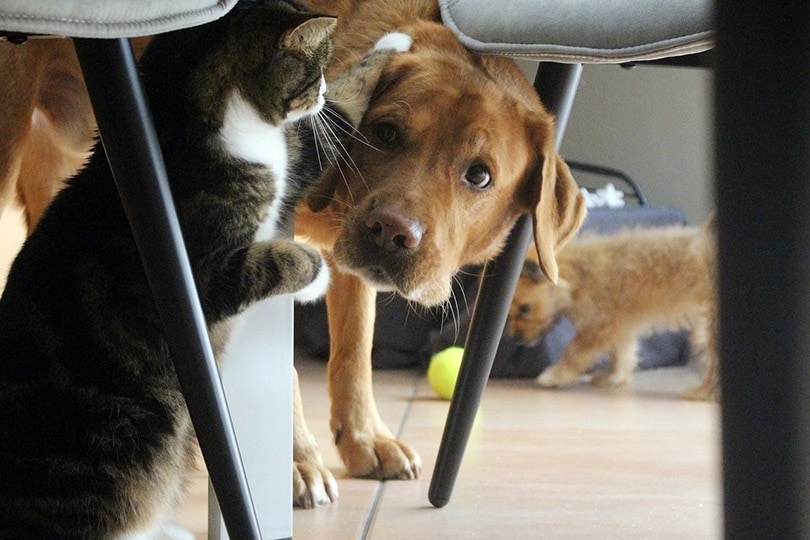
Improper Introduction
Improper introductions can be a recipe for disaster. If the introduction is forced or pushed too quickly, it can result in fear from either the cat, dog, or both. Cats may get aggressive with dogs out of fear, which can cause the dog to react out of aggression to protect themselves. This initial introduction can have a long-term impact, so you must do your research on how to properly introduce your dog and cat so that you are setting yourself up for the best possible outcome.
Prior Negative Experience
There’s a chance your dog is fearful of cats due to a previous experience. Cats can get quite aggressive with dogs and will lash out to assert their dominance or to protect themselves if they are feeling fearful. A negative experience from the past can leave your dog feeling wary, fearful, and even protective of themselves when in the company of a cat.
Lack of Obedience
Dogs that lack proper obedience training tend to see themselves as the alpha of the home. This can cause issues with other members of the household, including other pets. If your dog is unruly and sees itself as the boss, it can cause conflict that can easily lead to aggression. Make sure you start obedience training as soon as possible and assert yourself as your dog’s leader. This will not only help in terms of other pets but people and overall household functioning.
Possession Aggression/ Territoriality
Some dogs can be quite territorial and won’t take fondly to a cat invading their space. This is especially common when it comes to feeding time. Your dog may get along with your cat swimmingly until the cat comes near the food bowl or your dog’s favorite bed. Make sure you keep an eye out for the telltale signs of aggression and reach out to an animal behavior specialist or veterinarian for assistance with this kind of behavior.
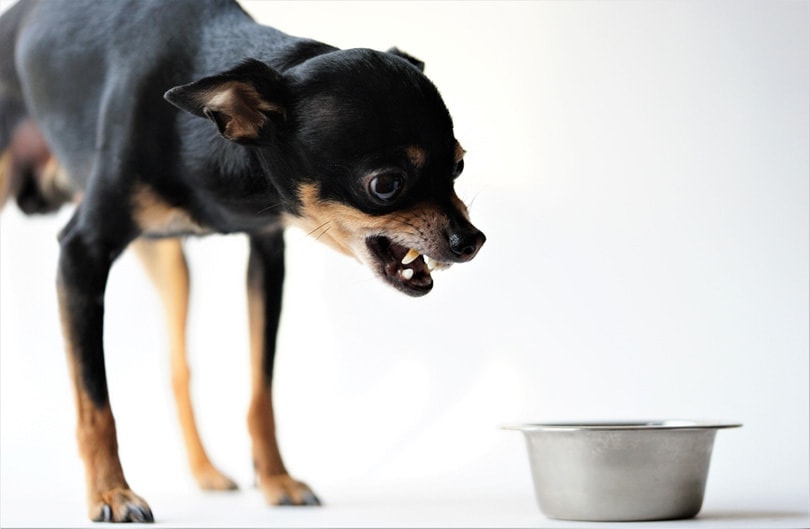
How Can I Stop My Dog from Being Aggressive Towards Cats?
Unfortunately, there is no one size fits all answer to this question. How to stop your dog from being aggressive toward cats truly depends on the reason behind the aggression. Some circumstances can be corrected with training techniques and dedication.
It is important to note that some dogs cannot live harmoniously with cats, especially those with high predatory impulses. This does not mean they are bad dogs; they just are not compatible with homes that have cats.
It is highly recommended that you assess your situation with a veterinarian or a professional dog trainer. These professionals have experience in the field and will be able to determine the best course of action for you to take.
Conclusion
There are quite a few telltale signs that a dog is aggressive toward cats. It is very important to be aware of a dog’s body language and behaviors that indicate potential aggressive behavior. Even the largest house cats are small in comparison to most dogs and an aggressive attack could result in tragedy.
This does not mean that every dog will display aggressive behaviors toward cats or that you can’t have a cat and dog in the same household. It is important to know the warning signs to prevent any unfortunate accidents. If you find yourself struggling with this kind of situation, reach out to your veterinarian or a professional animal trainer for assistance.
Featured Image Credit: Alex Zotov, Shutterstock


